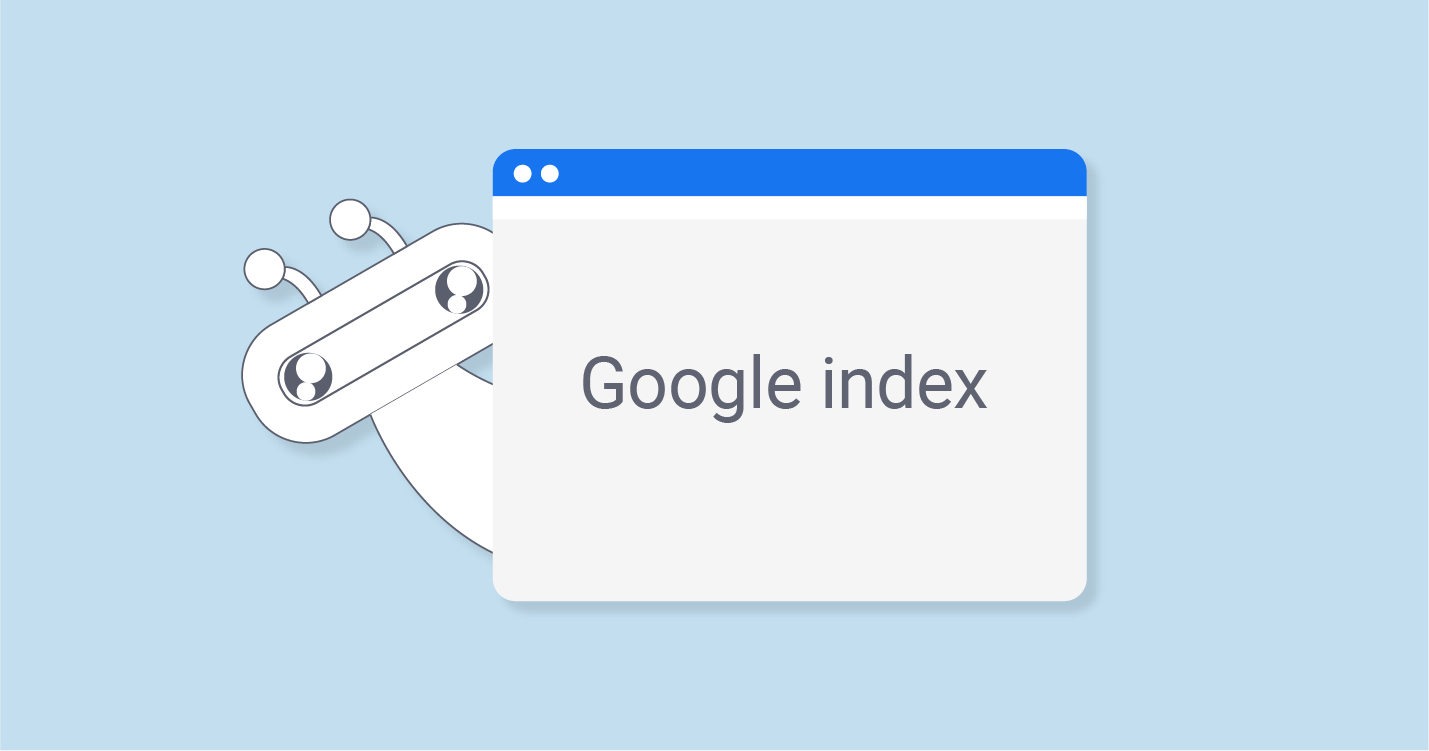Search engines follow a three-step process to unveil the most relevant outputs for users' inquiries: Crawling, Indexing, and Ranking and Serving.
Crawling: This initial step involves search engine bots discovering websites as they gather information from the internet. By scanning and following embedded links, bots navigate through billions of websites.
Indexing: Once websites are discovered, bots add them to a data storage system. Indexing is the subsequent step following crawling.
Ranking and Serving: This final step determines the Search Engine Results Page (SERP), listing websites that are most relevant to users' searches. Websites are ranked in order of relevance, from the most to the least.
Understanding Indexing: Why It's Important
Indexing is a crucial process in which search engine bots scan and process data from websites, storing it in a structured system. These bots meticulously analyze the content of each website, considering elements such as keywords, visuals, and overall website structure. The information gathered is then added to the search engine's database, forming an index that can efficiently serve users with relevant results.
Indexing plays a vital role in ensuring that search engines can effectively retrieve and present information from the vast sea of web content. It enables users to access the most relevant and valuable information with ease, making their online experience more efficient and satisfying.
Why indexing websites is important
Pages that are not indexed by search engine bots are absent from the search engine results page because they are not stored in the databases. As a result, they receive no organic traffic. For this reason, during SEO optimizations, indexing plays a crucial role in ensuring that pages receive the organic traffic they deserve.
How Google Determines the Number of Pages Indexed
This process, known as Google index querying, provides insights into the pages that are indexed and not indexed for a particular website. There are two methods to assess the number of indexed pages and identify which pages are included in the index.
How to Determine if Pages are Indexed Using Google
By typing "site:example.com" (where "example" is the domain name) into the search bar, we can view the number of pages indexed by Google. If there are no results on the search engine results page (SERP), it indicates that there are zero indexed pages.
Using Google Search Console to Check Indexing
To access the Google Search Console for a specific website, log in and navigate to the "Index" section. Click on "Coverage" which is located just below it. The number displayed under the "Valid" section indicates the total indexed pages. For more detailed information on these pages, refer to the details section. If the "Valid" section shows zero, it means that no pages are indexed. To identify errors on indexed pages, check the "Errors" section and find more information in the "Details" section.
What Exactly is a Google Indexing Request and How Can You Submit One?
Also known as Google Add Site, submitting an indexing request is a way to notify Google about the pages on your website and request them to be indexed. However, submitting these pages to Google does not guarantee immediate indexing or a top position on the SERP. Indexing requests are simply meant to inform Google about new or modified pages that have not been indexed yet. The actual process and timing of indexing are determined by Google's bots.
Submitting an Indexing Request Using Google Search Console
To submit a Google Index request, start by logging in to the Google Search Console account associated with the website. Then, navigate to the "URL Inspection" section and add the URLs of the selected pages. After a short waiting period, the Search Console will provide Google Index data and reveal the current indexing status of the pages. On the right side of the screen, you can find the "REQUEST INDEXING" section, where you can submit an indexing request for the relevant URLs.
Understanding "Remove Google Index Pages"
Removing pages from Google's index, also known as deindexing or delisting, involves notifying Google about specific pages on a website and requesting their removal. While informing Google about these pages can signal the bots to prioritize them, it is ultimately up to the Google bots to decide how and when these pages will be removed from the index.
Using Google Search Console to Removed Indexed Pages
To initiate the process, begin by logging into the Google Search Console account associated with the respective website. Once logged in, navigate to the "Index" section and locate the "Removals" option. Click on it. From there, proceed by creating a removal request using the "NEW REQUEST" button found on the right-hand side of the page.
Index Status Changes: How and Why
In some cases, it may not be necessary to request indexing for every page on a website. There can be various reasons why one might want to review and possibly modify the indexing status of pages. These reasons include:
- Excluding pages that are not suitable for indexing to optimize scanning resources, such as static pages.
- Leaving out pages that are still in the testing phase and do not provide original, high-quality content. This helps protect the website's authority and prevents user access to incomplete or unreliable information.
In such situations, one can verify the indexing status of pages by redirecting search engine bots. This allows for better control over which pages are indexed and displayed in search results.
Learn About Robot Meta Directives
Robots Meta Directives are codes assigned to bots to determine the indexing status of website pages. These directives are divided into two categories: Robots Meta Tags and X-Robots Tags.
Robots Meta Tags
Robots Meta Tags are HTML codes that guide browsers on how to handle web pages. They come in various types, such as index/noindex, follow/nofollow, and noarchive.
The index/noindex tags instruct search engine bots whether to include pages in their index or not. The "index" tag indicates that the pages should be indexed and shown on search engine results pages (SERPs), while the "noindex" tag advises against indexing and displaying the pages on SERPs.
By default, search engines assume that all pages should be indexed unless the "noindex" term is specified. Therefore, explicitly mentioning the "index" term is unnecessary.
Implementing Robots Meta Tags helps optimize page visibility and control how search engines interpret and present website content.
X-Robots Tags
X Robots Tags are utilized within the HTTPS overscript section as an alternative method to Robots Meta Tags. The instructions they convey are identical, offering a different approach while maintaining the same purpose.
Indexed Pages May be Removed by Search Engines
Web pages indexed by bots can be removed from search engine indexes without webmasters' intervention (e.g., by using the "noindex" meta tag). Removal may occur due to various reasons, including:
- Encountering 4XX client errors or 5XX server errors on the pages in question.
- Violating search engine terms and conditions.
- Requiring access permission for the related pages, which may not be universally accessible.
Canonical Tags: What are They and How are They Used?
Canonical Tags are codes that inform bots whether certain pages prefer a specific version or not. When a page contains a canonical tag, bots assume that there is a more preferred alternative version, and the URL specified in the canonical tag is seen as the authoritative page. On the other hand, if a page lacks a canonical tag, bots assume that there are no alternative versions and index the page as the original one.
Canonical tags play a crucial role in preserving the value of original pages against alternative versions. However, it's important to note that canonical tags don't directly impact the indexing status of pages. To control the indexing status, index/noindex meta tags should be used.
When You Should Use Canonical Tags
Canonical tags are utilized when a page contains elements such as filtering, ranking, etc., to guide URLs with parameters towards parameter-less versions.
Moreover, canonical tags should be implemented to prevent issues related to duplicate content that may arise due to similar page versions.
It is advisable to include canonical tags on each original page to notify bots about the presence of authentic content within a website.
How You Can Optimize Indexing
Optimizing Google indexing is crucial for improving the scanning budget and enhancing SEO operations. During the indexing optimization process, it is important to implement the following strategies:
- Utilize the appropriate robots.txt file: Placing the "disallow" command on indexed pages to gain organic traffic is a faulty practice as it renders those pages unavailable for scanning and, consequently, they won't be indexed.
- Establish a well-organized on-site link architecture for the website.
- Perform thorough backlink analysis.
- Implement a sitemap.
- Correctly employ robots meta tags and canonical tags.
- Ensure mobile compatibility for the website.
- Offer users up-to-date, high-quality, and original content, which indirectly benefits search engine bots as well. Learn more about creating SEO-friendly content in our related blog article.
Make sure you subscribe to our blog to learn more about SEO and digital marketing.










